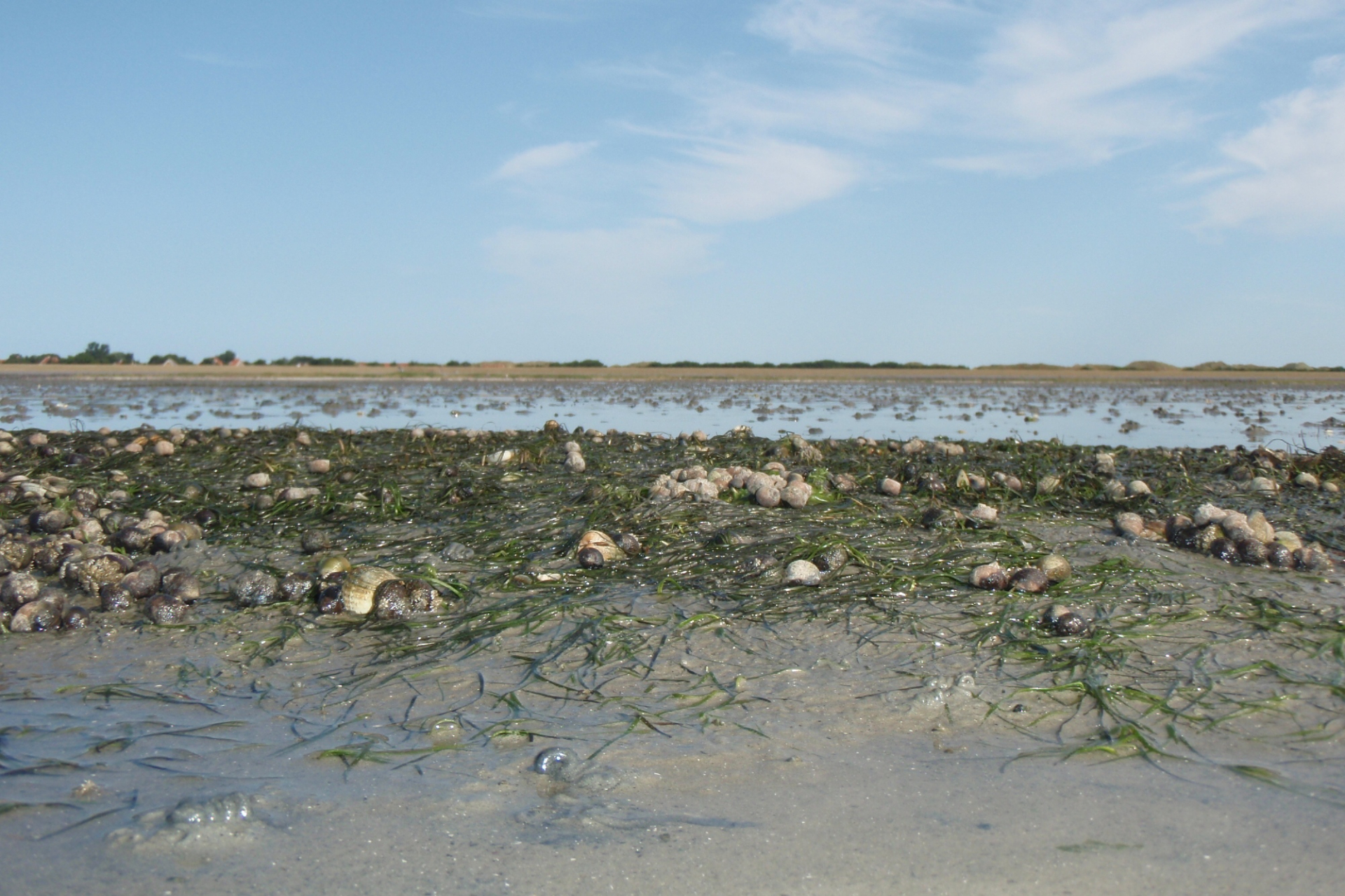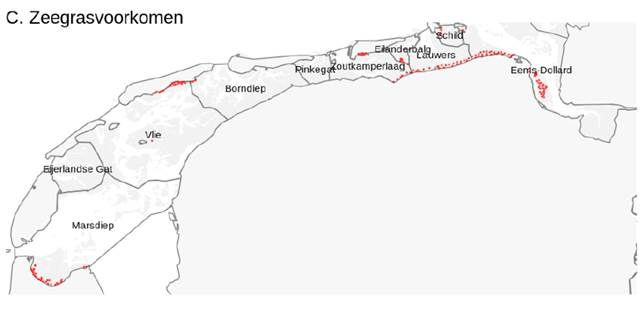Pollution, turbidity and water movement hamper seagrass recovery

The Dutch Wadden Sea was once rich in seagrass
Up until 90 years ago, seagrass was a common plant in the Wadden Sea, with the dense seagrass beds offering shelter to a multitude of species. Due to the construction of the Afsluitdijk (the 32-km-long dam that closed off the Zuiderzee in 1932), diseases and poor water quality, the seagrass in the Dutch part of the Wadden Sea has almost completely disappeared. Rijkswaterstaat is responsible for the recovery of eelgrass and is working on an approach to get eelgrass back into the Wadden Sea.
Different threats to seagrass
The analyses of existing data show that the occurrence of seagrass is related to the quality of the water and sediment, such as contaminants, the turbidity of the water and water movement. For the first time, a negative correlation was found between the occurrence of seagrass and levels of the harmful chemical element cadmium in the water. Current concentrations of ammonia and suspended matter may also limit the occurrence of seagrass. Strong currents and waves affect the rooting of seagrass in the mudflats, which means that changes in water movement as a result of climate change will also have an impact on the possibilities for seagrass restoration.
No influence found of Groningen salt marsh management
The researchers also investigated whether management of salt marshes along the coast of Groningen have a positive effect on seagrass recovery. In the management of the salt marshes, the wave action is inhibited by osier dams. Nevertheless, no indications have been found that the current dam maintenance in the salt marshes affects the local development of seagrass. The supply of seeds and plant parts from the largest seagrass field in the Dutch Wadden Sea, just east of the salt marsh works, is thought to play a more important role.

Recommendations for management
The research institutes recommend the following to Rijkswaterstaat to improve the management of seagrass:
1. Protect existing seagrass beds as well as possible by focusing measures on the most vulnerable life stages, such as the survival of rhizomes in the winter or the anchoring of the root mat and the density of the plants during summer storms;
2. Monitor relevant environmental factors in existing and former seagrass beds, including the thickness of a sand layer on a substrate of peat or clay;
3. Where relevant, reduce disturbing human activities such as bottom trawling fishing and the concentrations of substances toxic to seagrasses in the water and soil in (potential) seagrass areas;
4. Develop a dynamic and interactive map of current and future seagrass habitats based on a model that takes into account seasons and seagrass seed distribution.
5. Use the results of the model in the assessment of human activities in and around the Wadden Sea.
The research is a follow-up to the opportunity map seagrass (2019) and looks at human influences on seagrass recovery and possible (management) measures that could promote seagrass recovery. The study used monitoring data from Rijkswaterstaat (Rijkswaterstaat Waterinfo). Rijkswaterstaat will use the study as a basis for its seagrass restoration activities in the Wadden Sea.
This is an English translation of the Dutch newsitem by Rijkswaterstaat about the report.